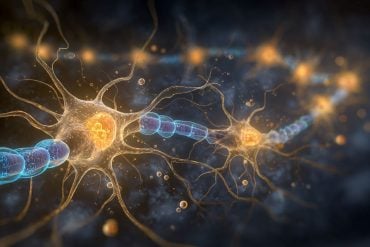How aging affects communication between neurons is not well understood, a gap that makes it more difficult to treat a range of disorders, including Alzheimer’s and Parkinson’s disease.
A new study from the Florida campus of The Scripps Research Institute (TSRI) offers insights into how aging affects the brain’s neural circuitry, in some cases significantly altering gene expression in single neurons. These discoveries could point the way toward a better understanding of how aging affects our cognitive ability and new therapeutic targets for the treatment of neurodegenerative disease.

“Although we don’t know exactly why, we do know there is a signaling imbalance as we age, and we’ve captured these changes at the single neuron level,” said Sathyanarayanan V. Puthanveettil, a TSRI assistant professor who led the work. “If we could identify the underpinnings of this mechanism, we may be able to target the specific mechanism to affect or reverse the aging process in human neurons.”
To record the electrical and physiological properties of single neurons, the scientists created a new method and applied it to the marine snail Aplysia californica, a widely used animal model. Many Aplysia gene expression signatures have counterparts in the human genome.
Using this methodology, which was published in the Journal of Visualized Experiments, the scientists were then able to focus on neuron R15, a burst firing neuron that is implicated in the regulation of water content and reproduction, showing how its response to the neurotransmitter acetylcholine and gene expression changed with age.
In a study published in the journal PLOS ONE, the team described specific changes in burst firing and action potentials—which play a central role in cell-to-cell communication—during the aging of R15, suggesting that changes in the response to acetylcholine during aging has been conserved during evolution in organisms from snails to mammals.
In another study, published in published in BMC Genomics, the team revealed unexpected information about gene expression during R15 aging.
“Aging brings bidirectional changes in the gene expression,” said Puthanveettil. “Some gene expression goes up; some goes down. This was surprising, particularly that some gene expression went up—something you don’t necessarily associate with aging.”
The study also noted that more than 1,000 DNA sequences are regulated differently in mature versus old R15 neurons. Among the specific biological pathways that are altered are networks involved in: cell signaling and skeletal muscular system development; cell death and survival; cellular function maintenance and embryonic development; and neurological diseases and developmental and hereditary disorders.
To confirm these findings, Puthanveettil and his colleagues also isolated and examined three other Aplysia neurons. Interestingly, while all the neurons showed changes in gene expression with age, these changes weren’t necessarily similar among the neurons. Also the magnitude of change was specific to individual neurons.
The scientists are now investigating how and why aging affects neurons differently.
Notes about this neuroscience and aging research
The first author of the Journal of Visualized Experiments study, “Aplysia Ganglia Preparation for Electrophysiological and Molecular Analyses of Single Neurons,” is Komol Akhmedov of TSRI. Other authors include Beena M. Kadakkuzha, also of TSRI.
The first authors of the PLOS ONE study,“Decreased response to acetylcholine during aging of Aplysia neuron R15,” are Komol Akhmedov and Valerio Rizzo of TSRI. Other authors include Beena M. Kadakkuzha of TSRI, Christopher J. Carter and Neil S. Magoski of Queen’s University, Canada, and Tom R Capo of the University of Miami.
The first author of the BMC Genomics study, “Age-Associated Bidirectional Modulation of Gene Expression in Single Identified R15 Neuron of Aplysia,” is Beena M Kadakkuzha of TSRI. Other authors include Komolitdin Akhmedov, Mohammad Fallahi and Anthony C Carvalloza of TSRI and Tom R Capo of the University of Miami.
The studies were supported by the National Institutes of Health (grant Number 1 R21 MH096258), the Whitehall Foundation and the State of Florida.
Contact: Eric Sauter – Scripps Research Institute
Source: Scripps Research Institute press release
Image Source: The image is credited to Komolitdin Akhmedov, Valerio Rizzo, Beena M. Kadakkuzha, Christopher J. Carter, Neil S. Magoski, Thomas R. Capo, and Sathyanarayanan V. Puthanveettil/PLOS ONE and is adapted from the PLOS ONE research paper.
Original Research: Full open access research for “Decreased response to acetylcholine during aging of Aplysia neuron R15” by Komolitdin Akhmedov, Valerio Rizzo, Beena M. Kadakkuzha, Christopher J. Carter, Neil S. Magoski, Thomas R. Capo, and Sathyanarayanan V. Puthanveettil in PLOS ONE. Published online December 27 2013 doi:10.1371/journal.pone.0084793
Abstract and video research for “Aplysia Ganglia Preparation for Electrophysiological and Molecular Analyses of Single Neurons” by Komol Akhmedov, Beena M. Kadakkuzha, and Sathyanarayanan V. Puthanveettil in JoVE. Published online January 13 2014 doi:10.3791/51075
Abstract for “Age-associated bidirectional modulation of gene expression in single identified R15 neuron of Aplysia” by Beena M Kadakkuzha, Komolitdin Akhmedov, Tom R Capo, Anthony C Carvalloza, Mohammad Fallahi and Sathyanarayanan V Puthanveettil in BMC Genomics. Published online December 14 2013 doi:10.1186/1471-2164-14-880
#neurogenetics, #neuroscience, #aging, #openscience, #openaccess







